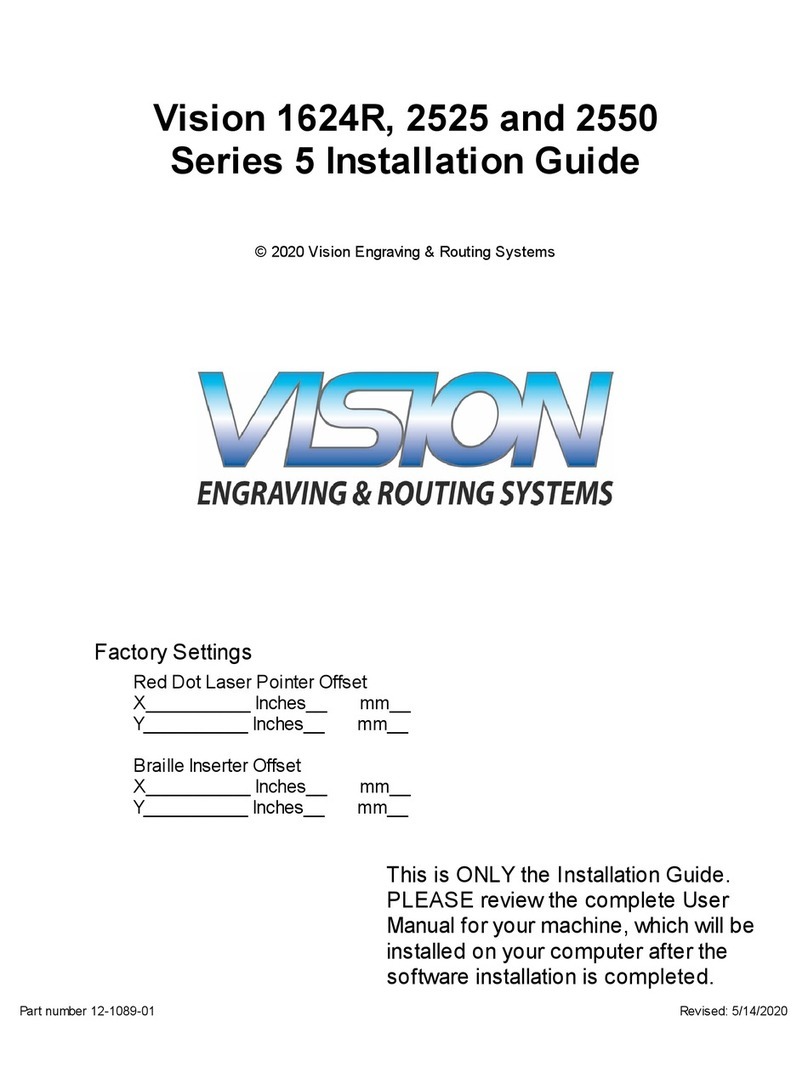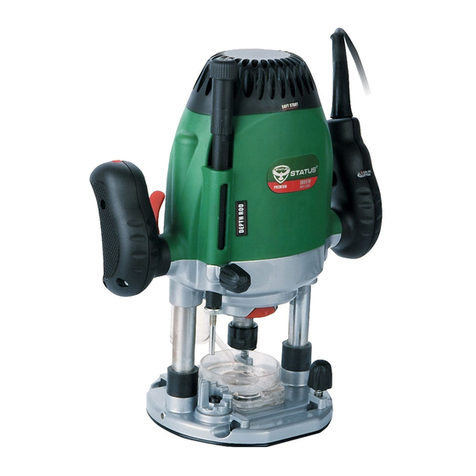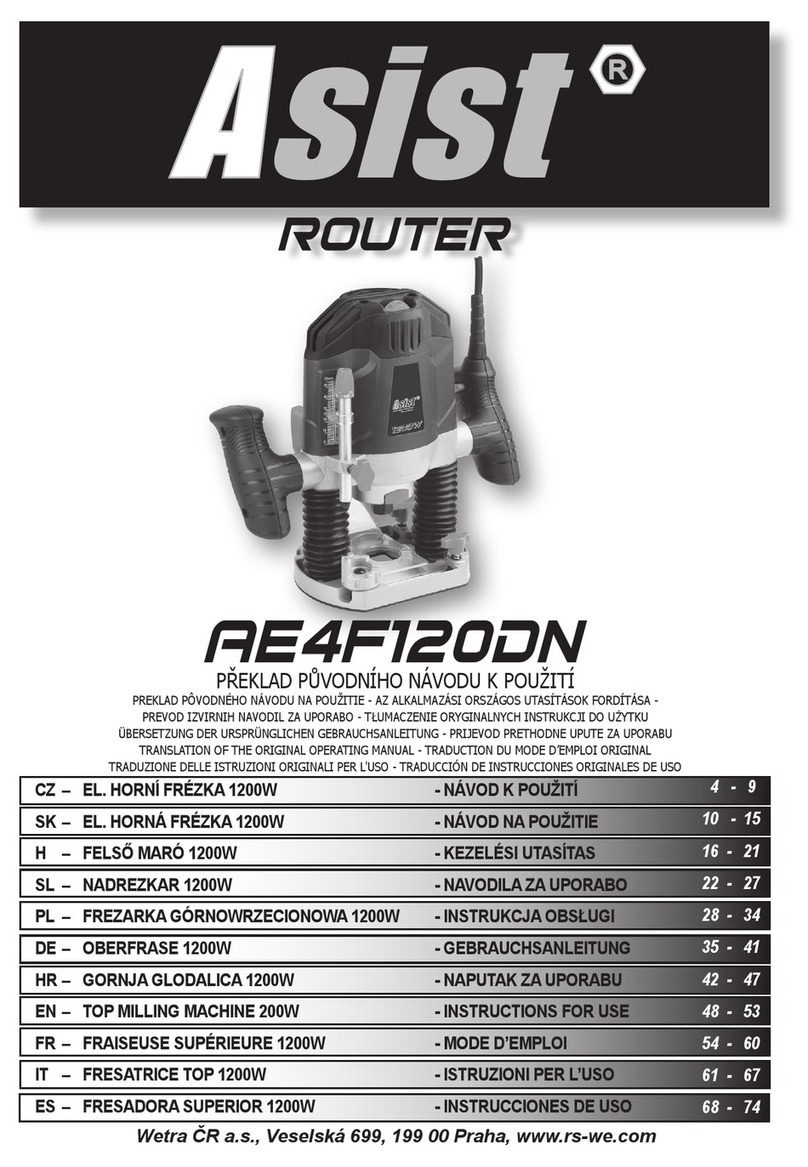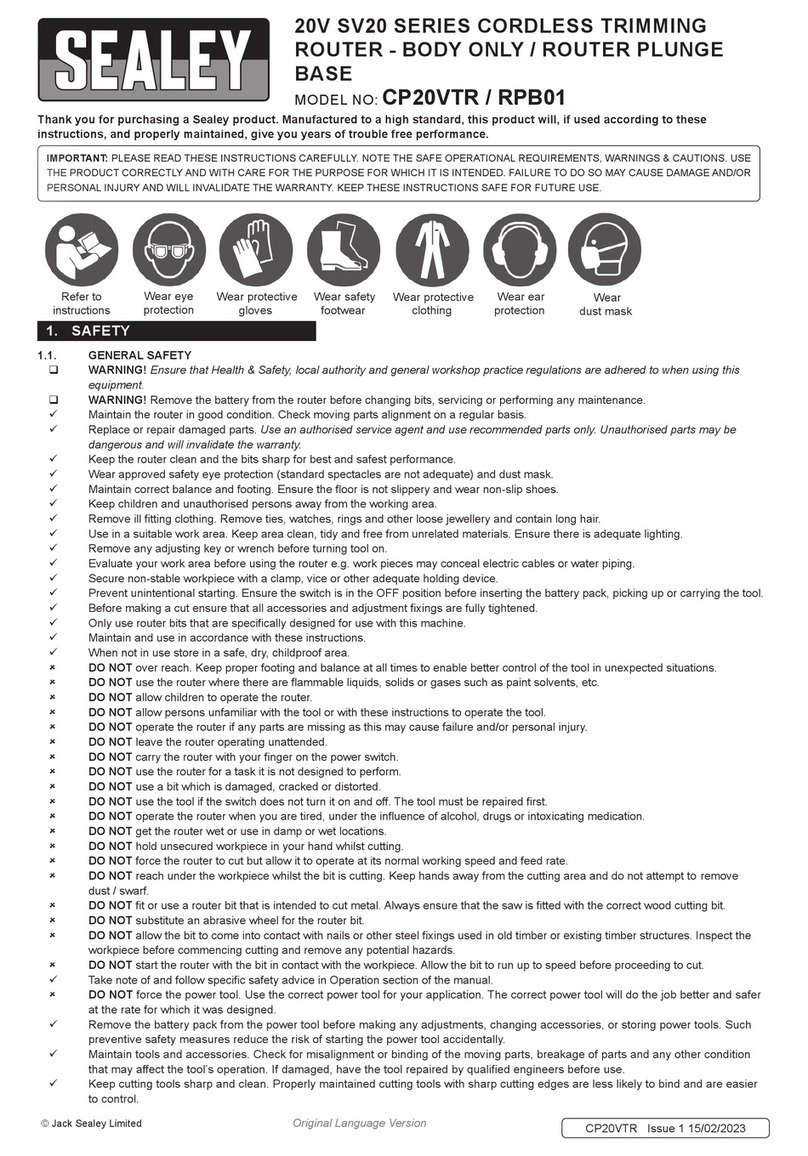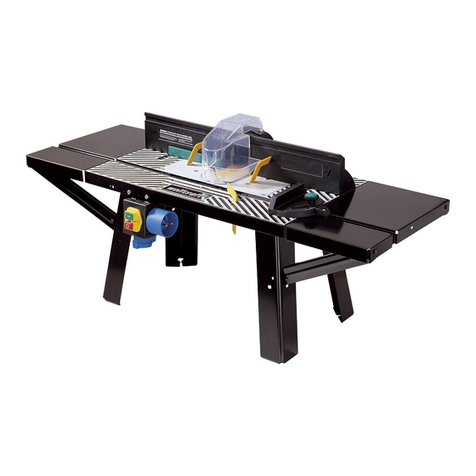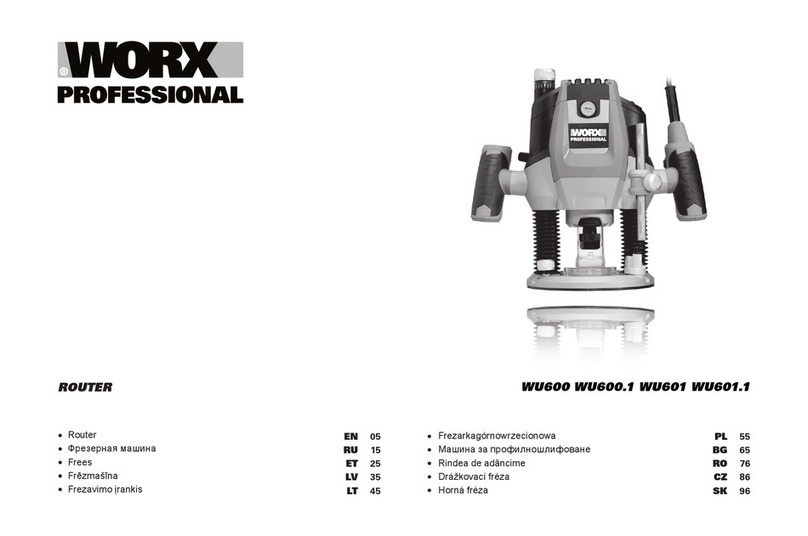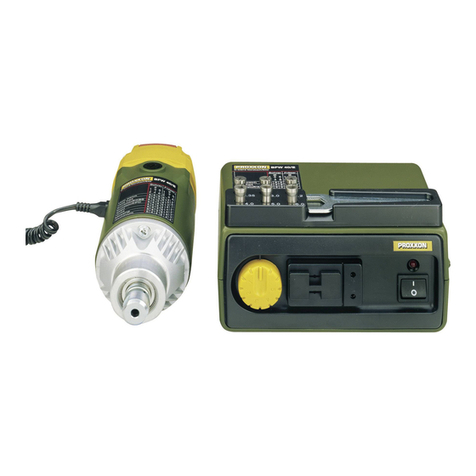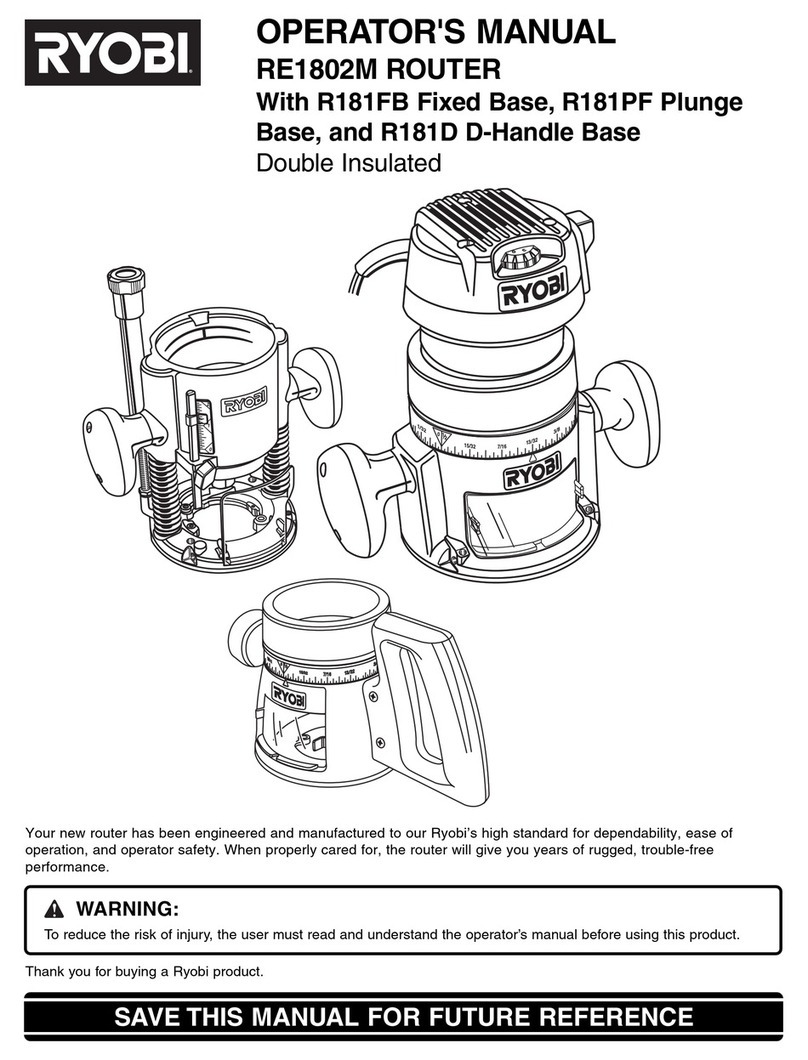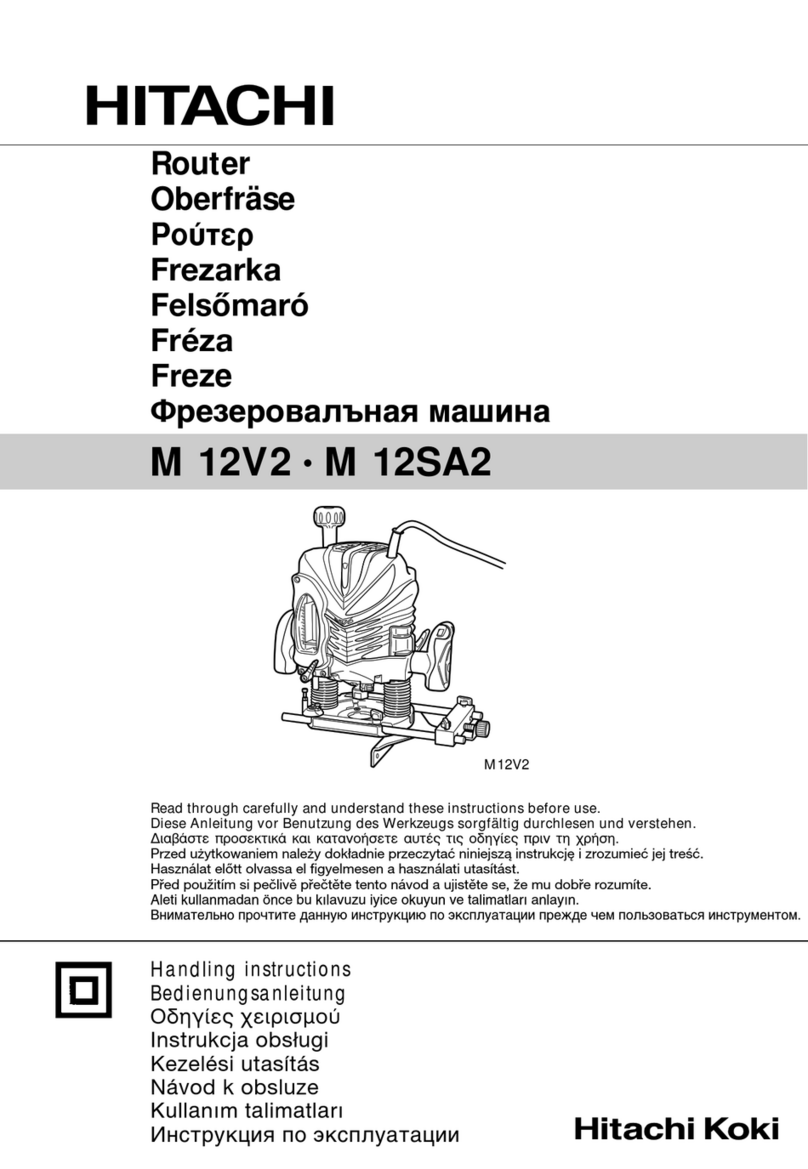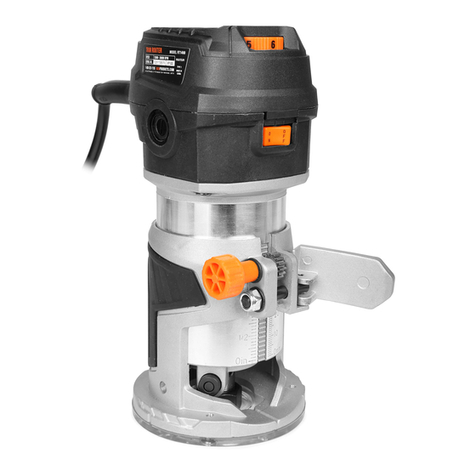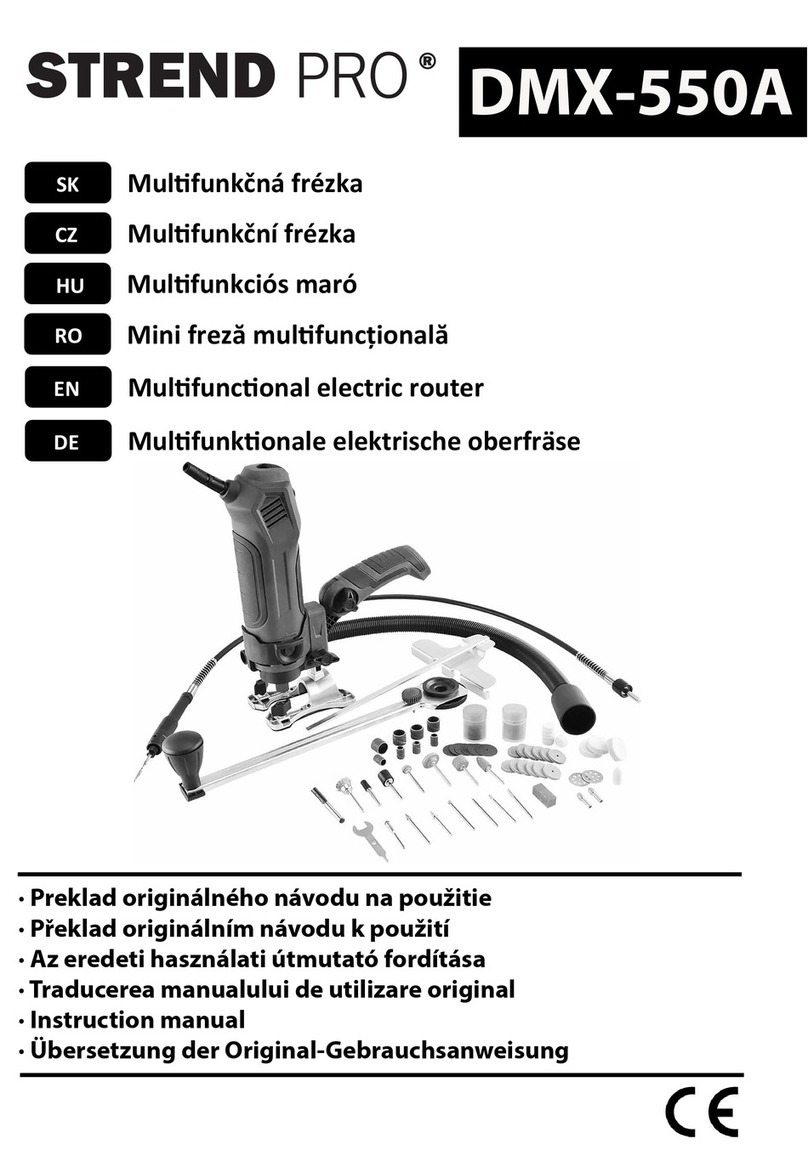
5
17. Use outdoor rated extension cords.
When a tool is used outdoors, use only
extension cords that are intended for outdoor
use and are so marked.
18. Stay alert. Watch what you are doing.
Use common sense. Do not operate a power
tool when you are tired.
19. Check for damaged parts. Before using a
tool check that there are no damaged parts. If a
part is slightly damaged, carefulty determine if
it will operate property and perform its intended
function. Check for alignment of moving parts,
binding of moving parts, breakage of parts,
proper mounting and any other conditions
that may affect the operation of the tool. A part
that is damaged should be properly repaired
or replaced by an authorised service facility,
unless otherwise indicated in this Instruction
Manual. Defective switches must be replaced
by an authorised service facility. Do not use a
tool if the switch does not turn the tool on and
off correctly.
20. Guard against electric shock. Prevent
body contact with grounded objects such as
water pipes, radiators, cookers and refrigerator
enclosures.
21. Use only approved parts. When servicing,
use only identical replacement parts. Use an
authorised service facility to t replacement
parts.
WARNING. The use of an accessory or
attachment, other than those recommended in
this Instruction Manual may present a risk of
personal injury.
Additional safety rules for electric routers
- Remove the plug from the socket before
carrying out any adjustment, servicing or
maintenance.
- Fully unwind cable drum extensions to avoid
potential overheating.
- When an extension cable is required, you
must ensure it has the right ampere rating
for your power tool and is in a safe electrical
condition.
- Ensure your mains supply voltage is the same
as your tool rating plate voltage.
- Your tool is double insulated far additional
protection against a possible electrical
insulation failure within the tool.
- Always check walls, oors and ceilings to
avoid hidden power cables and pipes.
- After long working periods external metal
parts and accessories could be hot.
- Always wear eye and ear protection and use
a dust mask.
- Handle router bits with care, they can be
extremely sharp.
- Check the bit carefully for signs of damage or
cracks before use. Replace cracked or
damaged bits immediately.
- Remove all nails, screws and other objects
from the workpiece. You can damage the bit
and the tool by cutting into a nail or other metal.
It can also present a safety hazard.
- Always use both handles and make sure
that you have a good grip on the router before
procceding with any work.
- Keep your hands away from the rotating bit
- Make sure that the bit is not in contact with
the workpiece when you switch the machine on.
- Before using the tool to make a cut, switch
on and let it run far a while. Watch for vibration
or wobbling that could indicate an improperty
installed bit.
-Take notice of the direction of rotation of the bit
and the direction of feed.
- Do not leave the machine running unattended.
Operate the tool only when controlled by both
hands.
-Always switch off and wait until the bit has
come to a complete standstill before removing
the machine from the workpiece.
- Do not touch the bit immediately after
operation. It may be extremely hot and could
burn your skin.
- Rags, cloths, cord, string and the like should
never be left around the work area.
- Use safety equipment including safety
goggles or shield, ear protection, dust mask
and protective clothing including safety gloves.

